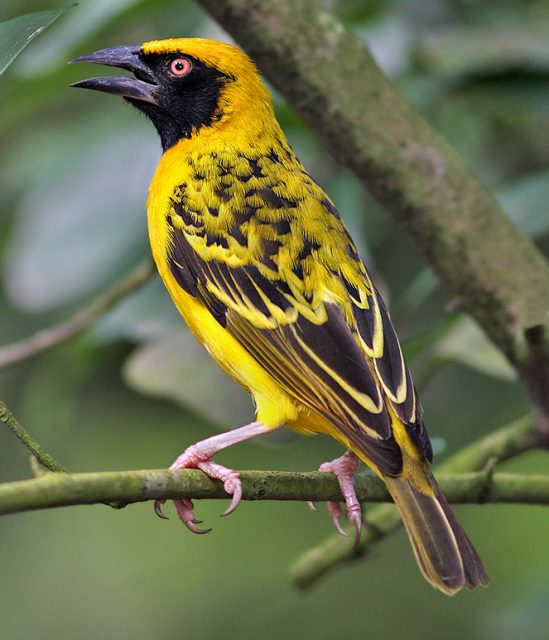Type the name of the breed you're looking for below
[wpdreams_ajaxsearchlite] Don't see the breed your're looking for? Click here and let us know!
Village Weaver
| Origin | The Village Weaver is a species of bird found in much of sub-Saharan Africa. It has also been introduced to Hispaniola, Mauritius and Réunion. |
| Size | Can grow up to 7 in(17.5 cm) |
| Colours | The Village Weaver is a bird with a strong conical bill and dark reddish eyes. In the northern part of its range, the breeding male has a black head edged by chestnut (typically most distinct on the nape and chest). Towards the southern part of its range, the amount of black and chestnut diminish, and the breeding males of the southernmost subspecies only have a black face and throat, while the nape and crown are yellow. In all subspecies the breeding male has a black bill, black and yellow upper parts and wings, and yellow underparts. |
| Lifespan | Can live 10+ years |
| Noise | Moderate, especially when kept in groups. |
| Characteristics | It is advisable to keep cock birds apart because they may fight, especially in breeding season. |
| Abilities | The male Weaver's strong conical bill acts like a sewing needle helping with building nests and bullying smaller companions. |
| Interaction/Time Requirements, Diet, Supplies Needed | They eat a foreign finch seed mixture that contains various millets and other small seeds such as niger. You need to change food and water twice daily, and clean the cage at least once a day, replacing toys and broken climbing branches. A minimum of 12 inches long, 14 inches wide, and 12 inches high. Space is important and indoor cages should be as large as possible. A large cage is required even if the bird is going to spend lots of time out of its habitat with you. Aviaries are sold ready for home assembly. Most are a rectangular design, with a mesh covered flight, and smaller shelter area, in which the birds are fed and can take shelter from the bad weather. They require a warm habitat for the winter months. Do not allow your birds outdoors until all signs of frost are gone. |



